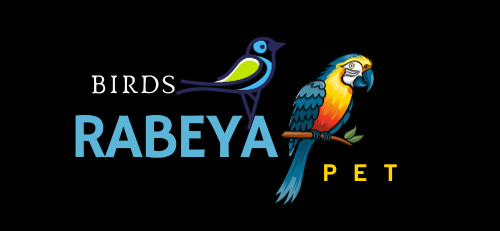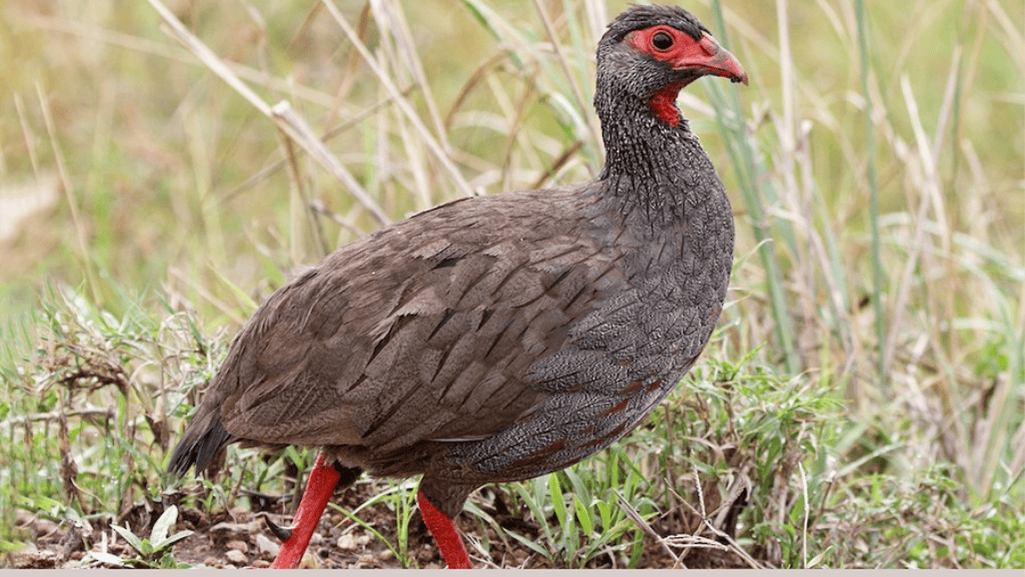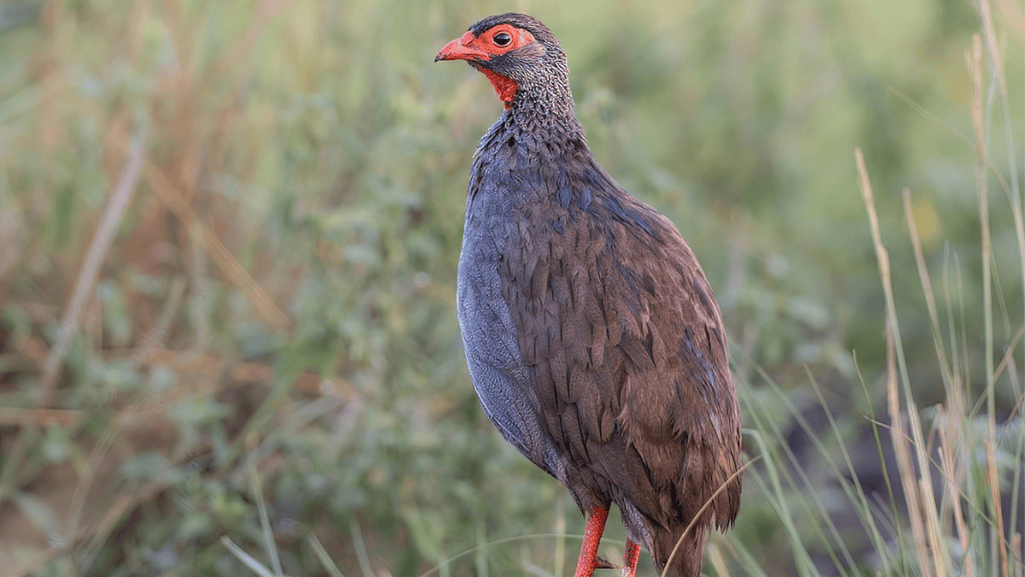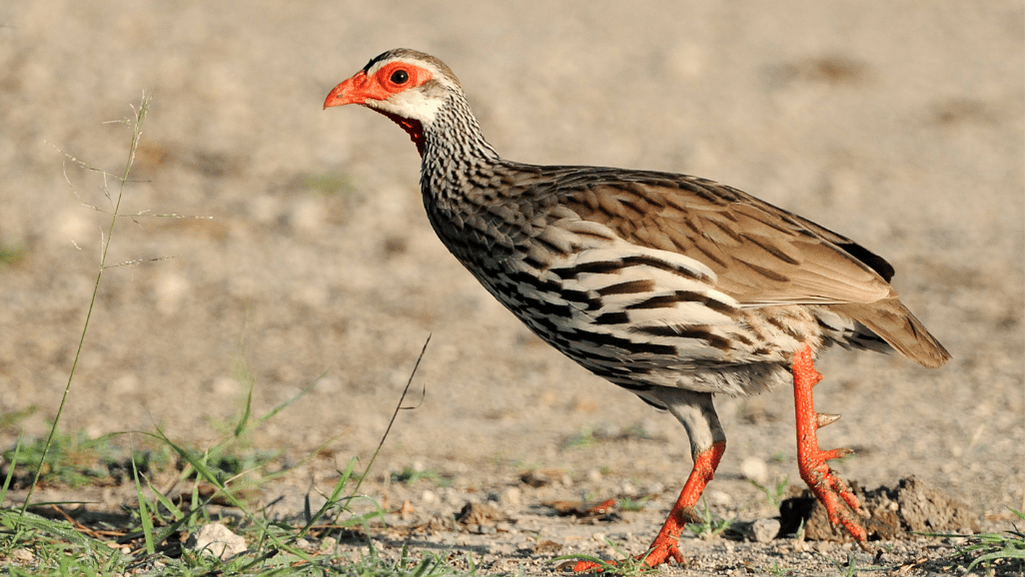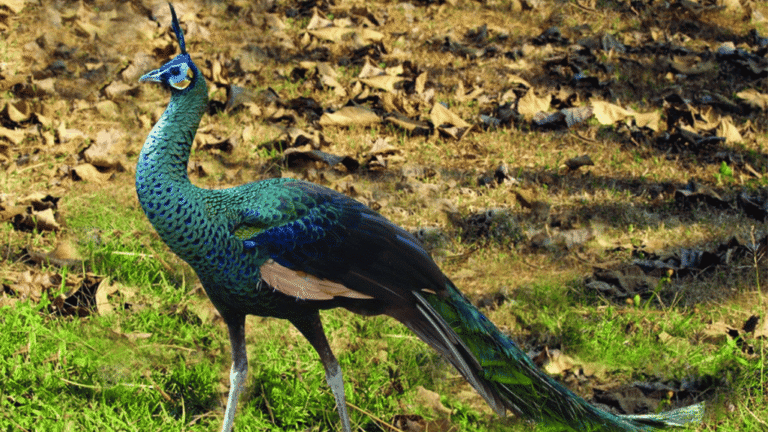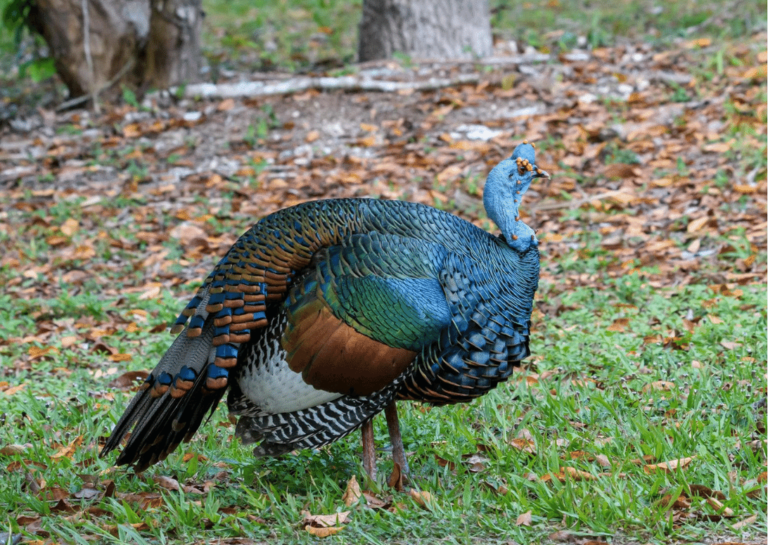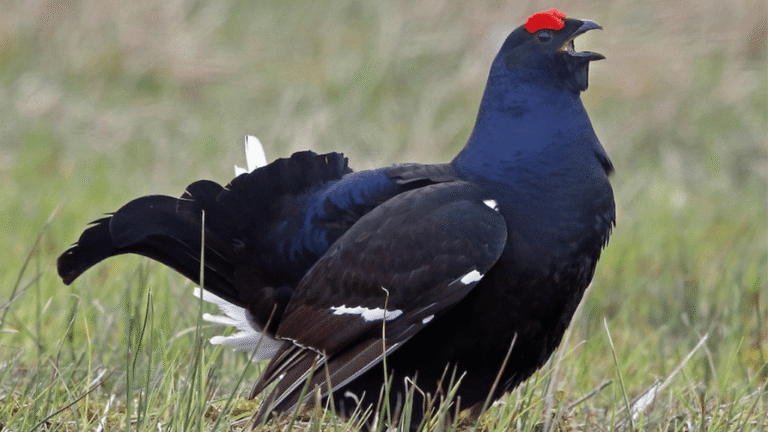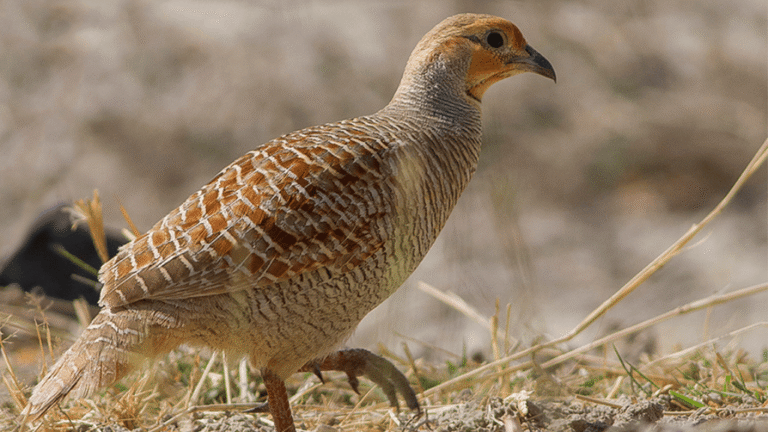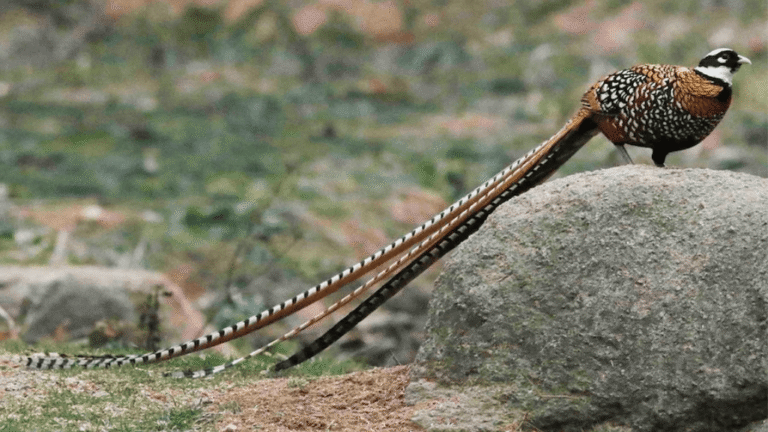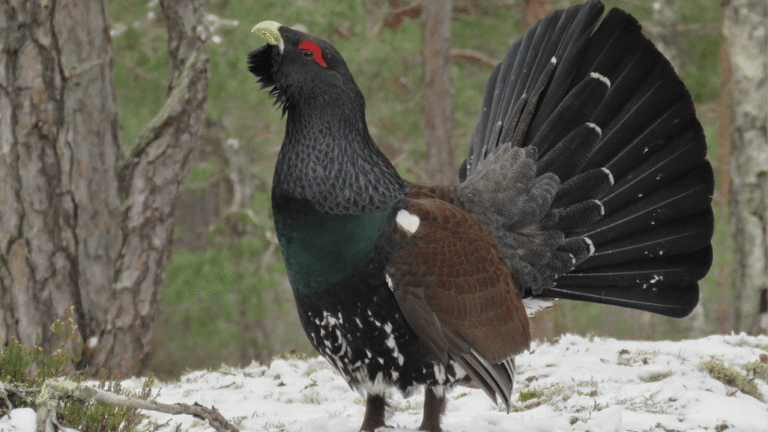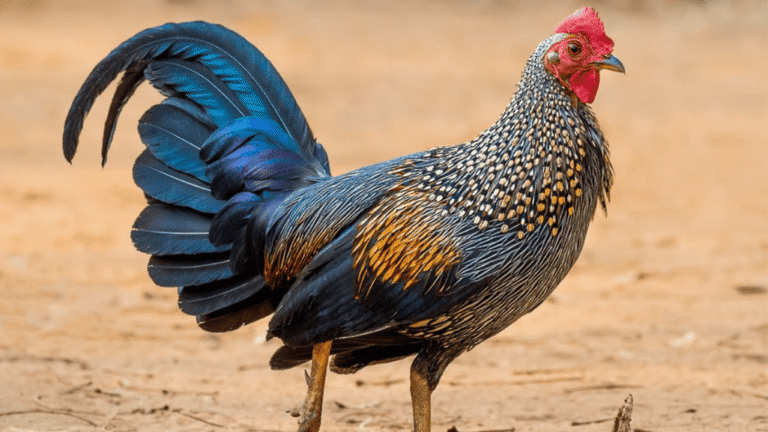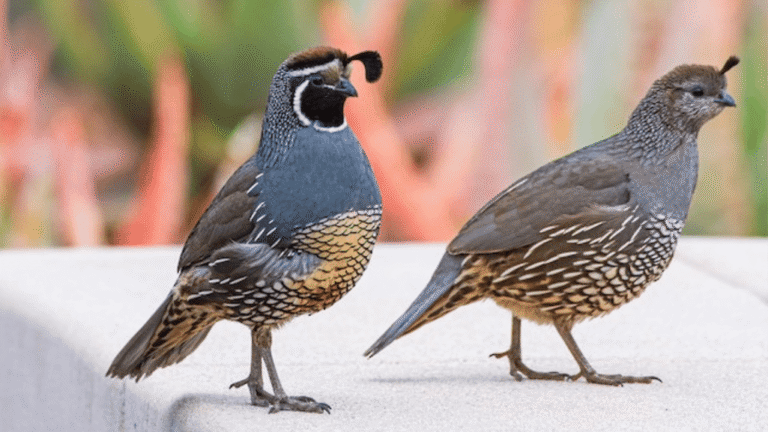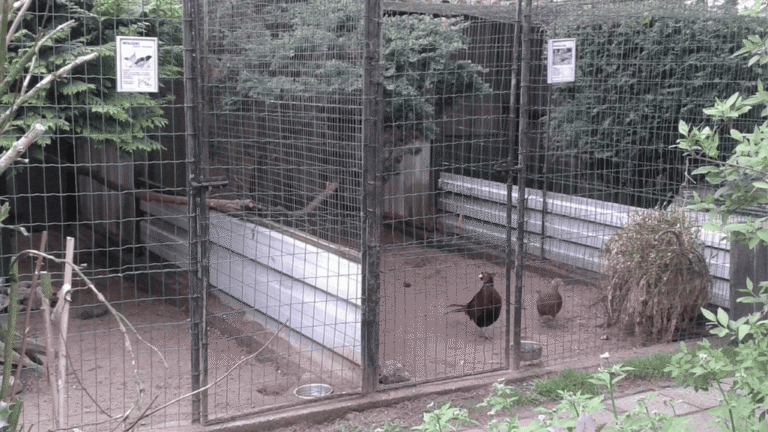The Red-necked Spurfowl, commonly known as the Spurfowl bird, is a fascinating species that resides in the forests of India. With its reddish appearance and distinctive call, this bird stands out among its peers. Despite its size, the Red-necked Spurfowl is quite secretive and can be challenging to spot as it swiftly flushes from the undergrowth, allowing only a fleeting glimpse.
This Spurfowl species, scientifically referred to as Galloperdix spadicea, belongs to the pheasant family. It bears resemblance to a long-tailed partridge and is characterized by reddish bare skin around its eye as well as one to two spurs on its legs, which are present in both males and females.
Key Takeaways:
- The Red-necked Spurfowl, also known as the Spurfowl bird, is endemic to India.
- It has a reddish appearance and distinctive call.
- The species is elusive and flushes from undergrowth, making it hard to observe.
- Males and females both have one to two spurs on their legs.
- Conservation efforts are vital to protect the Red-necked Spurfowl and its habitat.
Taxonomy and Classification of the Red-necked Spurfowl
The Red-necked Spurfowl, scientifically classified as Galloperdix spadicea, was described by the German naturalist Johann Friedrich Gmelin in 1789. It belongs to the genus Galloperdix along with the Painted Spurfowl and the Sri Lanka Spurfowl. The specific epithet “spadicea” refers to the bird’s chestnut-colored plumage. There are three recognized subspecies of the Red-necked Spurfowl, namely G. s. spadicea, G. s. caurina, and G. s. stewarti.
In the table below, you can find a summary of the taxonomy and classification of the Red-necked Spurfowl:
| Kingdom | Animalia |
|---|---|
| Phylum | Chordata |
| Class | Aves |
| Order | Galliformes |
| Family | Phasianidae |
| Genus | Galloperdix |
| Species | spadicea |
Description of the Red-necked Spurfowl
The Red-necked Spurfowl, a member of the pheasant family, is an overall reddish-brown bird with a large partridge-like appearance and a somewhat long tail. Its upper parts are brown with dark barring, while the face and neck are more grey in males. The underside of the Red-necked Spurfowl is rufous with dark markings. Both males and females have a distinctive red facial skin patch and red legs with one or two spurs. The chicks of the Red-necked Spurfowl have an unmarked cinnamon brown head and a dark brown band along the back.
Distribution and Habitat of the Red-necked Spurfowl
The Red-necked Spurfowl, scientifically known as Galloperdix spadicea, is primarily found in scrub, dry, and moist-deciduous forests, particularly in hilly areas of India. Its distribution range extends across the country, mainly south of the Ganges River.
This Spurfowl species thrives in habitats with good undergrowth, which provides essential cover and food sources. One noteworthy aspect of its habitat preference is the association with the invasive Lantana plant, often forming dense shrubby areas that create suitable conditions for the Red-necked Spurfowl to thrive.
To visualize the distribution of the Red-necked Spurfowl, take a look at the map below:
| Common Name | Scientific Name | Preferred Habitat | Distribution Range |
|---|---|---|---|
| Red-necked Spurfowl | Galloperdix spadicea | Scrub, dry, and moist-deciduous forests | India, south of the Ganges River |
The Red-necked Spurfowl’s distribution and habitat preferences underline its ability to adapt to various forest types, allowing it to occupy a significant portion of the Indian landscape.
Behavior and Ecology of the Red-necked Spurfowl
The Red-necked Spurfowl, scientifically known as Galloperdix spadicea, exhibits fascinating behavior and has unique ecological adaptations that contribute to its survival in its natural habitat.
Foraging Behavior
The Red-necked Spurfowl is primarily a ground-dwelling bird that forages in small parties of three to five individuals. It is mostly silent during the day but becomes more vocal in the mornings and evenings. This behavior helps them communicate with other members of their group and establish territories.
When it comes to feeding habits, the Red-necked Spurfowl has a varied diet. It feeds on fallen seeds, berries, mollusks, and insects found on the forest floor. By incorporating these diverse food sources into its diet, the Red-necked Spurfowl maximizes its chances of obtaining the necessary nutrients for survival.
Territorial Behavior
The Red-necked Spurfowl is known for its territorial nature. Once flushed, it typically flies a short distance to establish a new location within its well-defined territory. By maintaining these territories throughout the year, the Red-necked Spurfowl ensures access to essential resources such as food, water, and shelter.
Roosting Habit and Breeding Season
As night falls, the Red-necked Spurfowl retreats to the safety and security of trees for roosting purposes. They choose elevated positions on sturdy branches, allowing them to avoid potential predators that may lurk on the ground.
The breeding season of the Red-necked Spurfowl spans from January to June. During this time, courtship displays are observed, and pairs form strong bonds for successful reproduction. Nests are constructed on the ground, often concealed within thick vegetation, providing protection for the eggs and young chicks.
Understanding the behavior and ecology of the Red-necked Spurfowl, including its foraging patterns, territoriality, roosting habits, and breeding season, is crucial for conservation efforts aimed at preserving this unique species and its natural habitat.
Conclusion
The Red-necked Spurfowl, scientifically known as Galloperdix spadicea, is an elusive forest bird endemic to India. With its reddish plumage and distinctive call, the Red-necked Spurfowl is a fascinating species to observe in its natural habitat. It is further characterized by the presence of one to two spurs on its legs, adding to its unique appearance.
These birds prefer scrub and deciduous forests, especially those with good undergrowth. It is in these environments that they forage in small groups, searching for a varied diet consisting of fallen seeds, berries, mollusks, and insects. Their feeding habits contribute to the overall balance of the ecosystem they inhabit.
Conservation efforts are essential to protect the Red-necked Spurfowl and its fragile habitat. Preserving the forests and ensuring the availability of suitable undergrowth is crucial for their long-term survival. By raising awareness about this species and supporting conservation initiatives, we can contribute to the continued existence of the Red-necked Spurfowl and the biodiversity it represents.
FAQ
What is the scientific name of the Red-necked Spurfowl?
The scientific name of the Red-necked Spurfowl is Galloperdix spadicea.
Where is the Red-necked Spurfowl found?
The Red-necked Spurfowl is endemic to India and is found south of the Ganges.
What is the appearance of the Red-necked Spurfowl?
The Red-necked Spurfowl is a reddish-brown bird with dark barring on its upper parts and a rufous underside. It has a large partridge-like appearance and a somewhat long tail.
Is the Red-necked Spurfowl a secretive bird?
Yes, despite its size, the Red-necked Spurfowl is quite secretive and is often hard to see except for a few seconds when it flushes from the undergrowth.
What is the diet of the Red-necked Spurfowl?
The Red-necked Spurfowl feeds on fallen seeds, berries, mollusks, and insects.
Does the Red-necked Spurfowl have any spurs?
Yes, both males and females of the Red-necked Spurfowl have one to two spurs on their legs.
What is the habitat preference of the Red-necked Spurfowl?
The Red-necked Spurfowl is found in scrub, dry, and moist-deciduous forests, often in hilly areas. It prefers areas with good undergrowth.
When does the breeding season of the Red-necked Spurfowl occur?
The breeding season of the Red-necked Spurfowl spans from January to June.
Why are conservation efforts important for the Red-necked Spurfowl?
Conservation efforts are important to ensure the preservation of the Red-necked Spurfowl species and its unique habitat.

